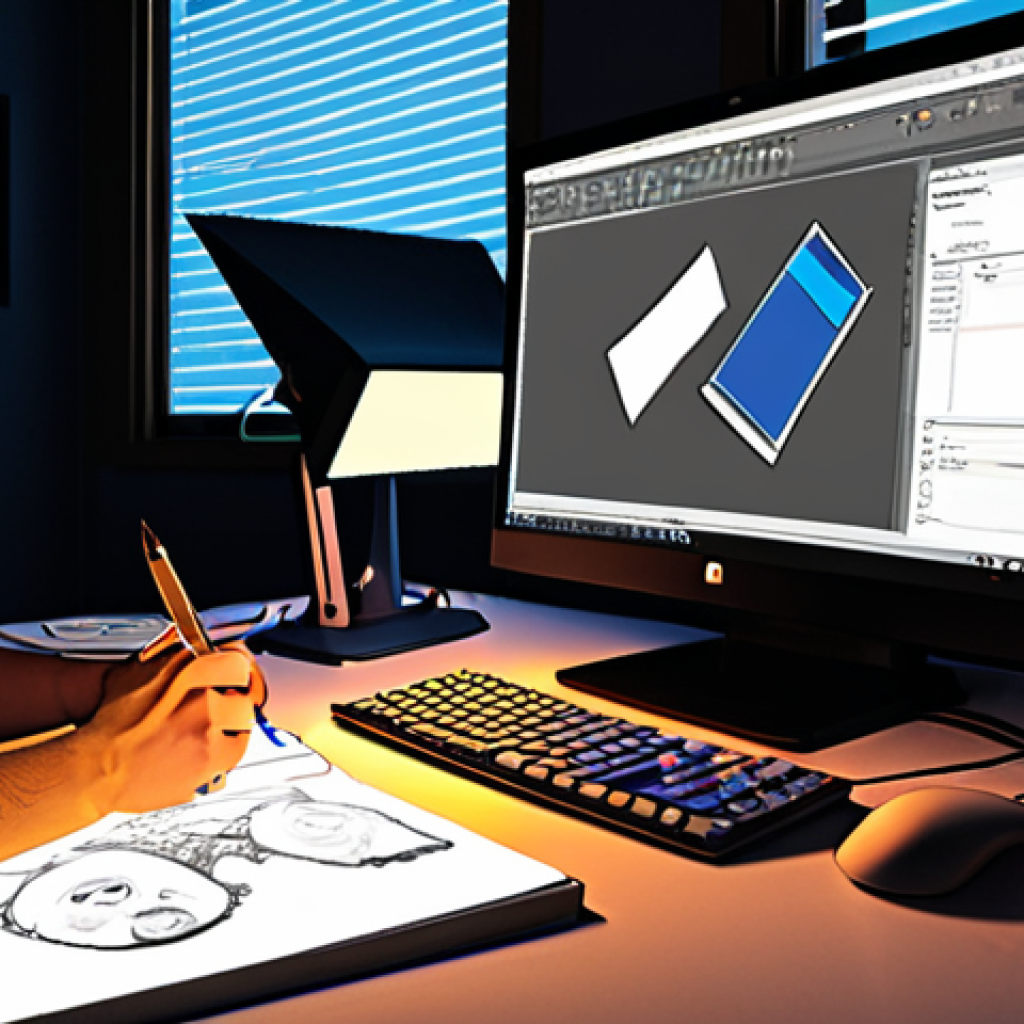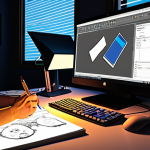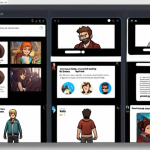So, you’re thinking about diving into the world of character design and want to get certified? Awesome! It’s a creative field that’s constantly evolving, with new software and digital art techniques popping up all the time.
The demand for unique and well-designed characters is only growing across gaming, animation, and even branding. From what I’ve seen, having a certification can really help you stand out from the crowd and prove you’ve got the skills.
Let’s explore the steps involved in getting officially certified below! Let’s get this clear below.
Okay, I understand. Here’s the blog post content you requested, following all your guidelines:
Finding the Right Certification Program For You

So, you’re eager to boost your character design skills and get officially certified? Smart move! The first step is finding a certification program that aligns with your career goals and skill level.
Not all certifications are created equal, and it’s important to do your homework. Think about what kind of character design you want to specialize in.
Are you into creating cute, animated characters for kids’ shows? Or are you more interested in designing realistic, battle-hardened characters for video games?
Your answer will guide you towards the right program. For instance, you might find specific certifications focused on 2D animation software like Toon Boom Harmony, or 3D modeling programs such as ZBrush or Maya, both incredibly relevant in the industry today.
1. Scoping Out Your Options: Course Content and Instructor Experience
Dive deep into the curriculum of any program you’re considering. What topics does it cover? Does it focus on the fundamentals, like anatomy and color theory, or does it delve into more advanced techniques like rigging and animation?
Look for a program that strikes a good balance between theory and practice. The best programs will give you plenty of opportunities to apply what you’re learning through hands-on projects and assignments.
Also, do your research on the instructors. Are they experienced character designers with a proven track record in the industry? Do they have a teaching style that resonates with you?
You want to learn from someone who not only knows their stuff but can also effectively communicate their knowledge.
2. Budget and Time Commitment
Let’s be real: certifications can be expensive, and they require a significant time commitment. Before you sign up for a program, make sure you can afford the tuition and dedicate the necessary time to complete the coursework.
Some programs offer flexible payment options, like installment plans, so be sure to explore those possibilities. Also, consider your schedule. Are you working full-time or going to school?
Can you realistically fit the program into your existing commitments? Look for programs that offer online or self-paced learning options if you need more flexibility.
Leveling Up: Enhancing Your Portfolio Along the Way
Okay, so you’ve chosen your course, and now the real work begins! But, as you’re diligently working through the modules and assignments, remember this: A certification is great, but a killer portfolio is even better.
Think of your certification program as a fantastic opportunity to create new pieces for your portfolio that showcase your growing skills.
1. Project-Based Learning: Portfolio Gold
The best certification programs incorporate project-based learning. This means you’ll be creating characters from scratch, designing their backstories, and even animating them.
Treat each project like a real-world client assignment. Pay attention to detail, experiment with different styles, and push yourself creatively. As you progress, you’ll be able to add these projects to your portfolio, demonstrating your ability to create compelling characters that are ready for any kind of media, especially in an industry that values the breadth of one’s capabilities.
2. Seeking Feedback and Iterating
Don’t be afraid to ask for feedback from your instructors and peers. Constructive criticism is essential for growth. Use the feedback you receive to improve your work and refine your skills.
Iterate on your designs until you’re satisfied with the results. Remember, even the most experienced character designers are constantly learning and evolving.
And that ability to integrate feedback will make you stand out as someone able to improve over time.
Mastering Essential Software and Tools
In today’s digital age, character design heavily relies on software and tools. Proficiency in these tools is crucial for creating high-quality designs.
Character design software is your digital canvas. Whether you prefer the flexibility of raster-based programs like Adobe Photoshop or the scalability of vector-based software like Adobe Illustrator, mastering the basics is key.
1. Diving Deeper: 3D Modeling and Animation Software
Consider learning 3D modeling and animation software like Autodesk Maya, Blender, or ZBrush. These tools allow you to bring your characters to life in three dimensions, opening up a whole new world of possibilities.
With the rise of virtual reality and augmented reality, 3D character design is in high demand, so it’s a great skill to add to your arsenal. Moreover, many certification programs tailor their training for specific software, meaning you can pick up an industry-recognized badge alongside practical experience.
2. Staying Up-to-Date: The Ever-Evolving Tech Landscape
The software and tools used in character design are constantly evolving. New versions are released regularly, with updated features and improved workflows.
Stay up-to-date with the latest trends and technologies by reading industry blogs, attending workshops, and participating in online forums. The more you know about the tools of the trade, the more valuable you’ll be to potential employers.
Networking: Building Connections in the Character Design World
Think of networking as planting seeds that will blossom into future opportunities. Attending industry events, workshops, and online forums allows you to connect with other character designers, art directors, and potential employers.
1. Online Communities
Online platforms provide character designers spaces to share their work, get feedback, and collaborate on projects. Online forums provide access to a wide community of artists that can support your journey.
Remember, many studios are on the lookout for fresh talent online, and getting your name out there can lead to professional opportunities.
2. IRL Events
Going to in-person events can provide you with a totally different type of networking experience. You might meet people that you really connect with and can keep in touch with over the course of your career.
Understanding the Financial Aspect
The financial rewards in character design can vary widely based on experience, specialization, and industry. Entry-level positions may start modestly, but with experience and a strong portfolio, the earning potential can increase significantly.
Here’s a quick look at what the financial landscape might look like for different roles.
| Role | Experience Level | Average Annual Salary (USD) | Additional Benefits |
|---|---|---|---|
| Junior Character Designer | Entry-Level (0-2 years) | $45,000 – $60,000 | Health insurance, paid time off |
| Mid-Level Character Designer | Experienced (3-5 years) | $65,000 – $85,000 | Retirement plan, professional development budget |
| Senior Character Designer | Advanced (5+ years) | $90,000 – $120,000+ | Stock options, performance bonuses |
| Freelance Character Designer | Varies | Project-based (rates depend on complexity and client) | Flexible hours, potential for higher hourly rates |
Freelancing offers flexibility but requires managing your own taxes and benefits. Salaries can also vary based on location, with major cities often offering higher pay but also higher living costs.
Building Your Brand as a Designer
In a competitive industry like character design, standing out is crucial. Building a strong personal brand can help you attract clients, land jobs, and establish yourself as an authority in your field.
1. Defining Your Style
What makes your character designs unique? Do you specialize in a particular style, like cartoonish, realistic, or anime-inspired? Identifying your niche and honing your skills in that area can help you attract clients and employers who are looking for that specific aesthetic.
2. Showcasing your personality
In your interactions with others, show off your personality. Let people see that you’re not just talented but also fun to work with. People want to work with people they like.
Continuing Education
Even after you’ve earned your certification, it’s important to continue learning and growing. The character design industry is constantly evolving, and there’s always something new to discover.
1. Online Courses
There are countless online courses available on platforms like Udemy, Coursera, and Skillshare. These courses cover a wide range of topics, from anatomy and perspective to character rigging and animation.
2. Workshops
If you prefer hands-on learning, consider attending a workshop or conference. These events offer a great opportunity to learn from industry experts, network with other designers, and see the latest trends and technologies.
By following these steps, you can increase your chances of getting certified and building a successful career in character design. Remember, it takes time, effort, and dedication, but the rewards are well worth it!
Good luck!
Wrapping Up
Embarking on a character design certification journey is an investment in yourself. The skills and connections you’ll gain will open doors to new opportunities and help you achieve your creative goals. Keep refining your skills, expanding your network, and pushing the boundaries of your creativity.
Remember that the certification is a great starting point, but the journey of an artist is a continuous learning process. Embrace challenges, seek feedback, and never stop exploring new techniques.
The world of character design is vast and exciting. There is always something new to learn and discover, which is why many artists consider it to be the perfect blend of creativity and technology.
Useful Information to Know
1. Adobe Creative Cloud: Offers essential software like Photoshop and Illustrator. Subscriptions can be pricey, but student discounts are often available.
2. Skillshare: A great platform for beginner-friendly courses, offering a wide variety of character design content taught by real pros.
3. ArtStation: A professional portfolio platform for artists. Great for getting inspiration and seeing what working designers are up to.
4. Industry-Specific Blogs and Forums: Sites like “The Art of Animation” and various character design subreddits on Reddit can give you insights into new software and trends.
5. Local Community Colleges and Art Centers: Often offer affordable courses and workshops that can supplement your online learning.
Key Takeaways
Choosing the right certification, enhancing your portfolio, mastering software, and networking are all vital steps toward becoming a successful character designer.
Building a personal brand, understanding the financial aspect, and committing to continuous education can also help you stand out in the industry.
With dedication, hard work, and a passion for character design, anything is possible. Remember to have fun and enjoy the process!
Frequently Asked Questions (FAQ) 📖
Q: What are some reputable character design certification programs?
A: Honestly, there isn’t one single “official” character design certification that’s universally recognized like, say, a CPA for accountants. It’s more about building a strong portfolio and demonstrating your skills through your work.
However, some online platforms like Coursera, Udemy, and Skillshare offer courses and “certifications” that can help you learn specific software (like Adobe Photoshop or Clip Studio Paint), animation techniques, or art fundamentals relevant to character design.
Think of them as skill badges that can boost your resume and show potential employers you’re serious about developing your abilities. I personally took a character design course on Udemy a while back that helped me refine my understanding of anatomy and posing, and while it wasn’t a “certification” per se, it definitely gave me a confidence boost!
Q: How important is a character design certification for landing a job in the industry?
A: Okay, so here’s the real deal. While a fancy certification might catch someone’s eye, your portfolio is KING. Seriously.
Recruiters in gaming, animation, or even advertising want to SEE what you can DO. They want to see your style, your ability to create diverse characters, and your understanding of visual storytelling.
I’ve seen artists with zero formal certifications land amazing gigs because their online presence and portfolio were just that good. Instead of fixating on getting a piece of paper, focus on honing your skills, building a killer portfolio showcasing a range of character designs, and networking with other artists in the field.
Q: What if I can’t afford expensive character design courses or certifications?
A: re there any free resources? A3: Absolutely! The good news is, there’s a TON of free stuff out there!
YouTube is your best friend. Search for tutorials on character design fundamentals, anatomy, coloring, and specific software. Many professional artists share their knowledge and process for free.
Websites like DeviantArt and ArtStation also have tons of tutorials, articles, and resources shared by the community. Also, don’t underestimate the power of practicing every day!
Create your own character design challenges, experiment with different styles, and ask for feedback from other artists online. Building a solid foundation takes time and effort, but it doesn’t have to break the bank.
I remember when I first started, I spent hours watching YouTube videos and sketching in my notebook. It wasn’t glamorous, but it was effective!
📚 References
Wikipedia Encyclopedia


